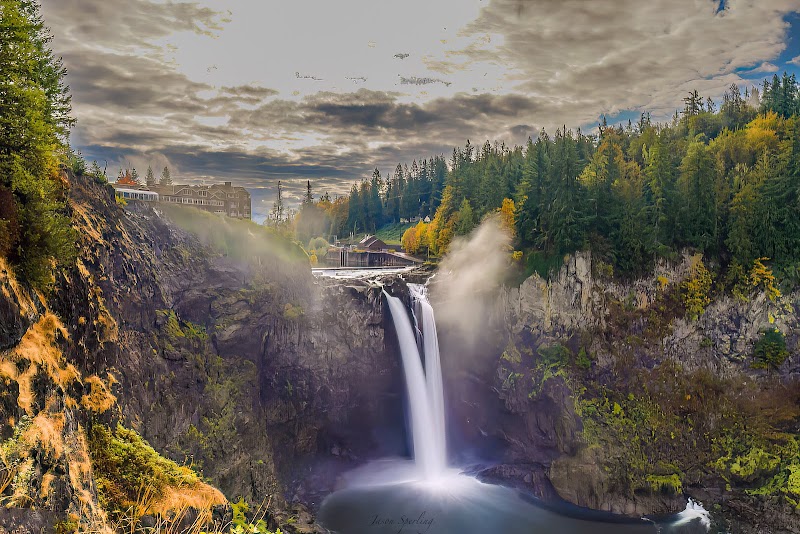
Explore Seattle’s Best Self-Guided Outdoor Tours for Every Adventurer
Discover Seattle through self-guided outdoor tours that combine urban exploration with the wild beauty of nearby forests and waterfronts. Empower yourself with practical route details and insider tips to make every step an adventure on your terms.
Choose Sturdy Footwear
Prepare for varied trail surfaces—from packed dirt to rocky inclines—with hiking shoes offering good grip and ankle support.
Hydrate Smartly
Carry at least 1 to 2 liters of water depending on trail length; refill options are scarce on most routes outside the city.
Start Early
Begin tours early to avoid afternoon rain showers common in the region and to benefit from quieter trails and better lighting for photos.
Respect Seasonal Changes
Trails can get slippery during fall rains or icy in winter; check trail conditions and weather forecasts before setting out.
Explore Seattle’s Best Self-Guided Outdoor Tours for Every Adventurer
Seattle offers a dynamic outdoor adventure through its diverse self-guided tours that balance urban charm with rugged natural beauty. Whether you’re tracing forested trails, navigating cityscapes, or venturing to nearby parks, a well-planned self-guided tour near Seattle lets you set your own pace while soaking in the region’s distinctive environment.
Start by selecting a route tailored to your experience level. Popular self-guided tours in Seattle range from urban discovery walks along the waterfront to moderate hikes through forested hills just beyond city limits. Many trails cover distances between 3 to 7 miles, with elevation gains typically under 1,000 feet—perfect for casual hikers yet engaging enough to challenge seasoned explorers.
Expect to thread through moss-draped evergreens and alongside streams that seem alive and watchful, their currents urging you forward. Trails like the Discovery Park Loop provide a mix of flat boardwalks and gentle climbs, leading to panoramic views of Elliott Bay and the Olympic Mountains. Each stop reveals a facet of Seattle’s rugged Northwest, where nature dares you to engage fully.
Essential preparations include sturdy footwear designed for mixed terrain, a hydration plan suited for the day’s length, and timing your tour to avoid peak afternoon crowds or sudden weather shifts. Spring and early fall deliver crisp air and fewer people, enhancing the feeling of wilderness within reach.
SEO keywords such as “self-guided tours Seattle,” “Seattle outdoor adventure,” and “hiking near Seattle” highlight the appeal of discovering the area independently. Practical tips ensure visitors can confidently navigate trails, while sensory details connect them with the environment’s character. By merging inspiration with clarity, these tours invite every visitor—whether a local or tourist—to meet the outdoors head-on, respecting the challenges it offers and rewarding those willing to explore it alone.
Below this overview, you’ll find a curated list of nearby trips and excursions to book. These add complementary experiences, helping you dive deeper into Seattle’s outdoor offerings and uncover unique adventures beyond your self-guided path.
Nearby Trips
All Adventures
Boat Charters
Water Activities
Adventures near Seattle, Washington
Discover the unique and memorable adventures that make Seattle, Washington special.
Frequently Asked Questions
Are self-guided tours safe for solo hikers in Seattle?
Yes, many self-guided tours near Seattle are safe for solo adventurers, especially during daylight hours. However, it’s best to inform someone of your plans, carry a phone with GPS, and stay on marked trails to minimize risks.
Which self-guided tours offer the best views of Puget Sound?
The Discovery Park Loop and the Magnolia Bluff Trail showcase sweeping vistas of Puget Sound, Olympic Mountains, and the Seattle skyline, offering stunning and accessible viewpoints within a few miles.
What local wildlife might I encounter on these hikes?
Common sightings include black-tailed deer, varied songbirds, and occasionally river otters near water bodies. Be mindful of nesting birds during spring and avoid disturbing wildlife habitats.
How should I prepare for variable weather during the tour?
Layered clothing is key, along with waterproof gear due to frequent light rain or sudden weather changes. Check the local forecast and carry extra dry layers especially in spring and fall.
Are there any historical or cultural sites along these self-guided routes?
Certain trails pass near historical landmarks, like the West Point Lighthouse and remnants of early settler paths. Informational plaques along some routes provide insights into tribal history and the area’s development.
Is parking readily available at trailheads?
Most popular trails near Seattle have designated parking, but spots fill quickly on weekends and holidays. Early arrival or using public transit options can ease parking challenges.
Recommended Gear
Hiking Shoes
Offers necessary traction and foot protection for mixed rocky and dirt trails typical around Seattle.
Water Bottle or Hydration Pack
Staying hydrated is crucial, especially in warmer months with longer hikes.
Light Rain Jacket
Spring weather in Seattle tends to be wet and unpredictable, so pack a breathable rain jacket.
Map or GPS Device
While many trails are well-marked, carrying a route map or GPS helps avoid confusion on intersecting paths.
Local Insights
Hidden Gems
- "The secluded beaches at Discovery Park often go unnoticed by casual visitors, offering serene waterfront and tide pool exploration."
- "Carkeek Park’s clay cliffs provide an uncommon geological viewpoint within city limits."
Wildlife
- "Black-capped chickadees and pileated woodpeckers enliven the forest soundscape."
- "River otters frequent the coastal edges, especially near low tide."
History
"Seattle’s trails incorporate Native American heritage sites and early logging routes, reflecting the region’s layered past and ongoing respect for tribal lands."